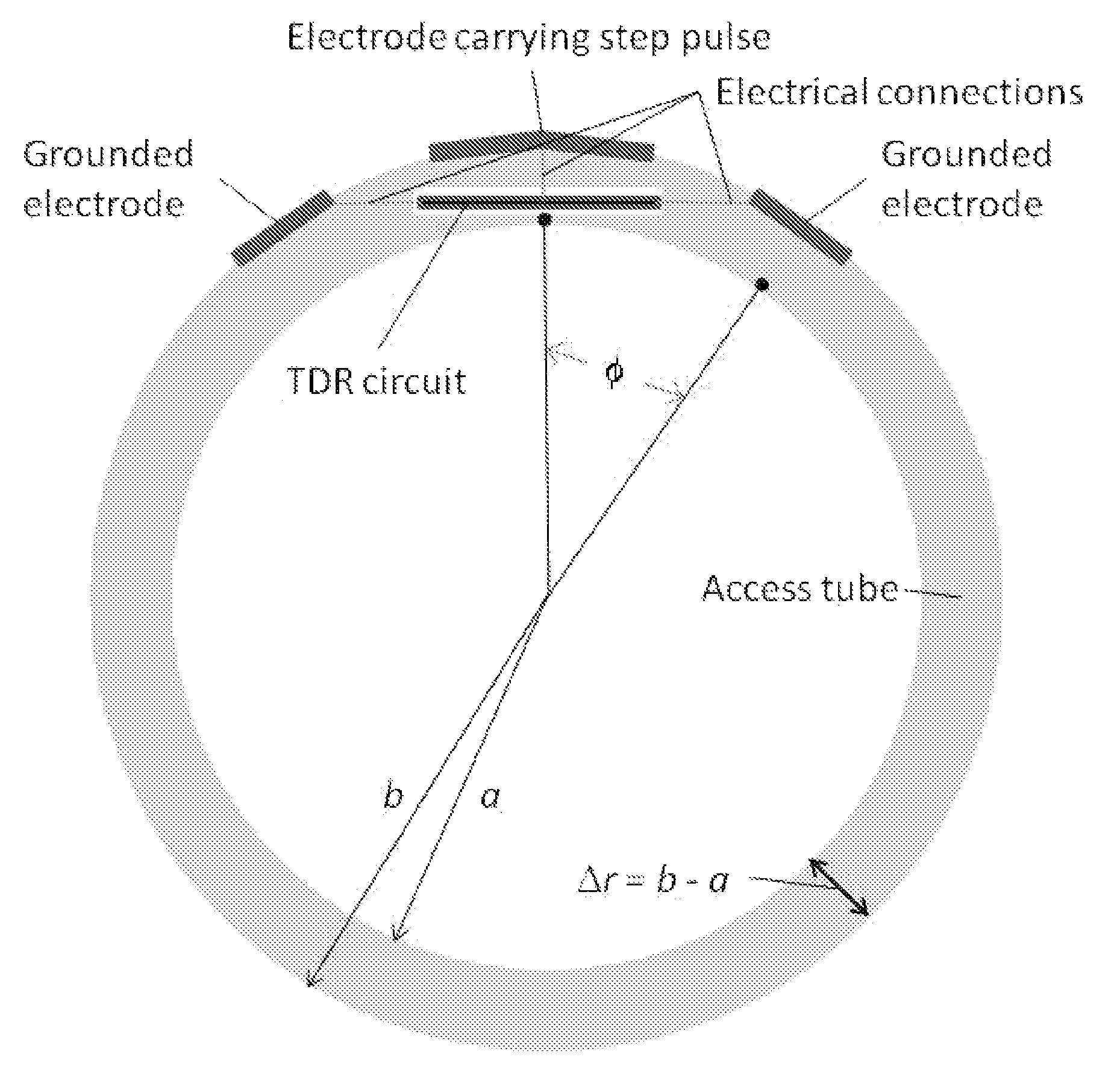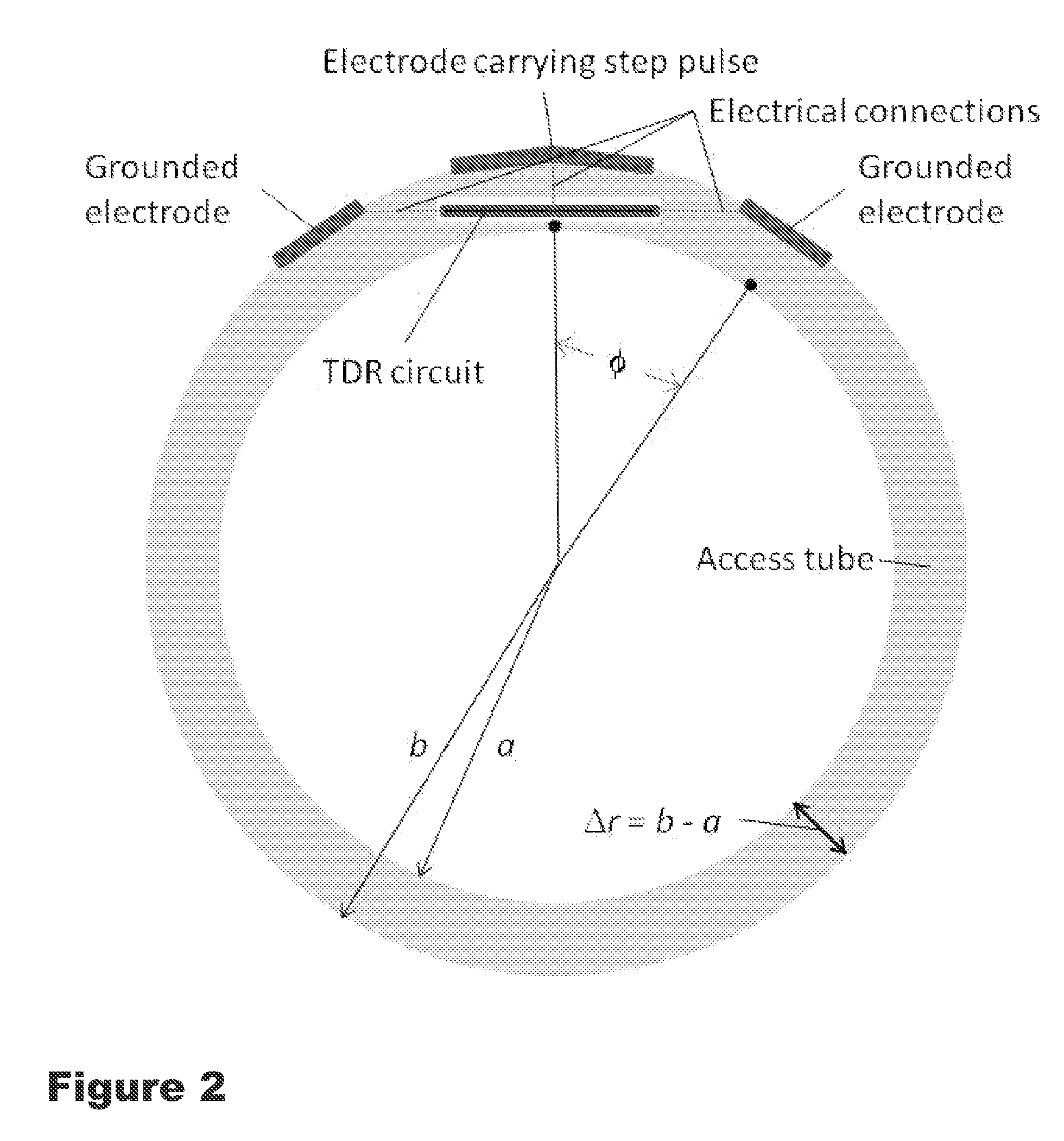Soil water and conductivity sensing system
a conductivity sensing and soil water technology, applied in the direction of resistance/reactance/impedence, instruments, measurement devices, etc., can solve the problems of inability to obtain reasonable field mean profile water contents, inability to meet the requirements of access tubes and sensors, and inability to accurately calibrate capacitance sensors in laboratory settings. the accuracy of np or tdr calibration is typically less than that of tdr
- Summary
- Abstract
- Description
- Claims
- Application Information
AI Technical Summary
Benefits of technology
Problems solved by technology
Method used
Image
Examples
example 1
[0070]This example utilizes the sensor including a cylindrical access tube with surface-mounted electrodes of this invention for use in TDR. This cylindrical geometry facilitates sensor installation at multiple depths in the soil profile. Variations in the tube and electrode geometries are tested in different media, including air, triethylene glycol, deionized water, sand, and clay loam. First, the sensor geometry is detailed; then, the construction procedure is described; finally, the results of sensor waveforms and dielectric measurements are compared across sensors and across media to assess sensor performance.
Access Tube Design and Geometrical Parameterization
[0071]FIG. 2 shows a cross-section of the probe design with design parameters. The waveguide-on-access-tube TDR design comprises a cylindrical dielectric tube, with three electrodes on its surface that may or may not be connected to voltage ground or a source voltage. The probe can be fully described by the following variab...
PUM
 Login to View More
Login to View More Abstract
Description
Claims
Application Information
 Login to View More
Login to View More - R&D
- Intellectual Property
- Life Sciences
- Materials
- Tech Scout
- Unparalleled Data Quality
- Higher Quality Content
- 60% Fewer Hallucinations
Browse by: Latest US Patents, China's latest patents, Technical Efficacy Thesaurus, Application Domain, Technology Topic, Popular Technical Reports.
© 2025 PatSnap. All rights reserved.Legal|Privacy policy|Modern Slavery Act Transparency Statement|Sitemap|About US| Contact US: help@patsnap.com



